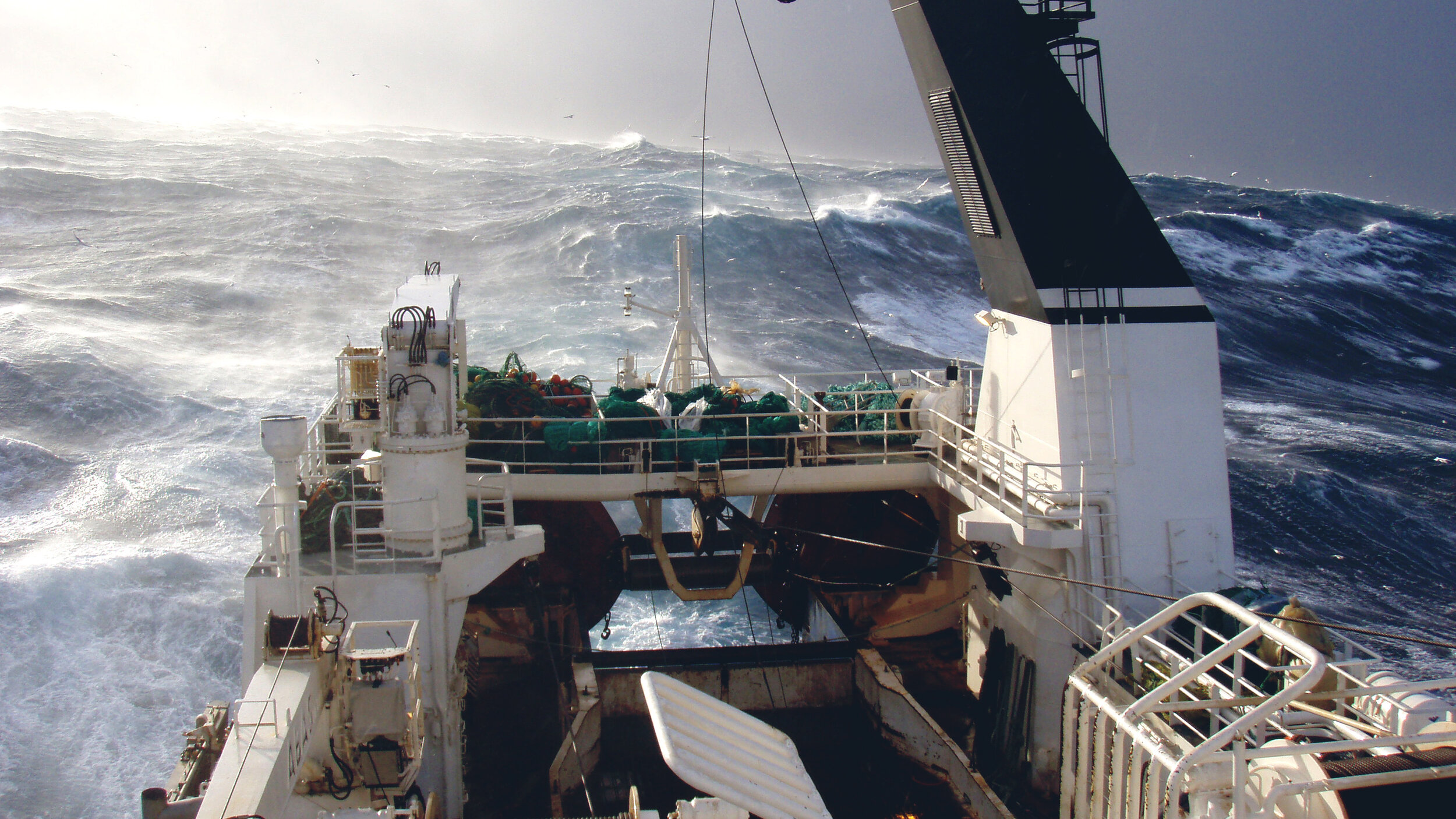
About us
With 10 fishing vessels and 29.6 cod trawling licences, Lerøy Havfisk AS is the biggest trawler company in Norway.
Lerøy Havfisk AS is a fishing company with activities in Norway. The group operates ten trawlers with pertaining fishing rights. The group also owns several fish processing plants in Nordland and Finnmark in Northern Norway, which are leased to our sister company Lerøy Norway Seafoods under long-term contracts. Lerøy Norway Seafoods processes fish at these plants. The group's primary business area is catching white fish.
The company primarily fishes for cod, haddock, saithe and prawns. All fish are headed and gutted on board the vessels, and the company can provide fresh and frozen fish all year round.
Lerøy Havfisk has 29.6 quotas for cod and haddock and 31.9 saithe quotas, as well as prawn licences. Other species are also caught, including redfish and Greenland halibut.
The newer vessels also produce fishmeal, oil and fish silage from residual raw materials on board.
The head office of Lerøy Havfisk AS is located in Ålesund, and the company has offices in Stamsund and Hammerfest.
Lerøy Havfisk AS consists of the shipowning companies Nordland Havfiske, Finnmark Havfiske and Hammerfest Industrifiske. The company also owns production plants in Båtsfjord, Kjøllefjord, Honningsvåg, Hammerfest, Melbu and Stamsund.
Lerøy Havfisk AS is a subsidiary of Lerøy Seafood Group ASA
Our history
The trawling industry and deep-sea fishing have long-standing traditions. Click on the years below to read more about how it all started and developments up to the present.
1930
1950
1951
1951
1953
1953
1956
1956
1959-1960
1962
1962
1966
1970-1973
1973
1976
1984
1994
1996
1996-2004
2005
2008-2009
2010
2011
2013
2016
2020
Nordland Havfiske AS
Nordland Havfiske AS consists of what was formerly Havfisk AS in Melbu and Lofoten Trålerrederi AS in Stamsund. The two companies merged in 2006 under the name Nordland Havfiske AS. The company currently owns and operates 4 trawlers, and it has 12 cod trawling licences and 5 prawn licences.
Havfisk AS was acquired by Norway Seafoods AS, now Lerøy Havfisk AS, in 1996. Havfisk AS was formed in 1953, and was owned by Melbu Fiskeindustri from 1980. Lofoten Trålrederi was established by a number of local industry enterprises, the biggest of which was J. M. Johansen AS, and all municipalities in the Lofoten area except for Værøy and Røst, in addition to other major investors.
Pertaining onshore facilities
Stamsund
All of Havfisk Stamsund AS's activities take place in Stamsund in Lofoten. The company was established in 1876, and it remained Norway's biggest producer and exporter of stockfish until the 1980s. The company is now wholly-owned by Lerøy Havfisk (formerly Aker Seafoods), and following major investments, the plant is now a modern fish product and fillet factory with state-of-the-art production equipment. The plant is leased to Norway Seafoods, which is responsible for its operation.
Melbu
All of Havfisk Melbu AS's activities take place in Melbu in Vesterålen. The company was formed by private investors in 1963 after being taken over from the Norwegian state. The plant was built during the Second World War, and was one of the most modern plants in Norway. The development of Melbu harbour with a new navigation channel was completed in 2008. Lerøy Havfisk (formerly Aker Seafoods) has contributed to the realisation of this project together with other local enterprises in Melbu, the municipality, the port authority and government agencies. The harbour now allows for calmer and safer entry and is a reliable harbour even in difficult weather conditions. It has also been adapted to accommodate larger vessels. The company is now wholly-owned by Lerøy Havfisk (formerly Aker Seafoods), and following major investments in buildings and production equipment in recent years, the plant has become a modern and efficient facility. The plant is leased to Norway Seafoods, which is responsible for its operation.
Finnmark Havfiske AS
The company was established in 2006 after Aker Seafoods acquired West Fish-Aarsæther AS. The many companies in West Fish-Aarsæther AS, which had a total of approx. 11 cod trawling licences divided over a number of vessels, merged in 2006. The company currently owns and runs 4 trawlers. It has 11.5 cod trawling licences and 3 prawn licences.
Tilhørende landanlegg
Nordkyn/Kjøllefjord
The facility in Kjøllefjord was established by Brødrene Aarsæther early in the 20th century, and cod liver oil and stockfish production were the main activities. The present plant was built in the 1970s. Fresh fillets, crab and salted fish are produced here. The plant is leased to Norway Seafoods, which is responsible for its operation.
Båtsfjord
The facility was established by Brødrene Aarsæther in 1949 and has been modernised several times over the years. In 2005, it was taken over by Lerøy Havfisk (formerly Aker Seafoods) and is now a modern producer of fillets and salted fish. Activities are based at Holmen in Båtsfjord, which has a good natural harbour, and the facility buys fresh fish from coastal vessels, the local and visiting fishing fleet. Fish is also landed by trawlers from Finnmark Havfiske AS owned by Lerøy Havfisk. The plant is leased to Norway Seafoods, which is responsible for its operation.
Hammerfest Industrifiske AS
The company owns and operates two trawlers and has six cod trawling licences.
Hammerfest Industrifiske AS was established in 1953. The steam trawler Dunsby was bought from England and renamed Findus 1. In 1954, Findus 1 was modified and renamed Skaidi. Another three trawlers were bought from England and named Rairo, Gargia and Masi. The company's first stern trawler Håja was delivered in 1966.
During the period 1970–1973, the company's newbuild programme was implemented and the company got its present name. In 1989, 1996 and 1997, Gargia, Rairo and Masi underwent extensive modifications and upgrading. The company has replaced several of its trawlers since 1997 and is currently operating the vessels Doggi and Rypefjord.
Pertaining onshore facilities
Rypefjord og Forsøl
The factory in Rypefjord was built by Norway Seafoods, now Lerøy Havfisk, in 2002. The plant was used as a filleting plant until 2014, when fillet production was moved to Forsøl. The factory in Forsøl runs fish landing facilities and produces fresh fish fillets. The factory in Rypefjord is now used for salted fish production. Both factories are leased to Norway Seafoods, which is responsible for their operation.


